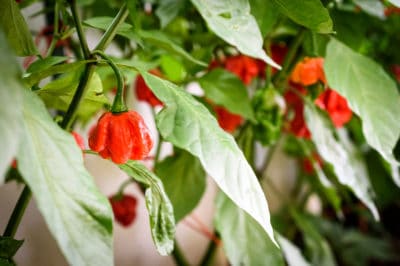How to Plant Habanero Peppers
In USDA zones 11 and above habanero peppers are perennial plants. Sow seeds any time of the year outdoors in a garden bed or container. Plants will not tolerate frost and should be protected or brought inside if temperatures drop below 60°F (15°C).
In cooler climates, they are grown as annuals. Sow seed indoors 8-12 weeks before the last frost date in your region. Habanero plants will take about 100 days to reach full maturity from sprouting.
Sow seeds 1/4 inch deep in a high-quality potting soil. Soil blocks or four-inch garden pots work well for germinating. Keep the seeds in a temperature range of between 65-75°F (18-24°C). Here is a quick planting guide for habanero peppers:
- USDA zones 10 and below sow seed indoors
- Plant seeds indoors 8-12 weeks before last frost
- Use high quality peat or coir based potting soil with perlite
- Ideal germination temperature: 65-75°F (18-24°C)
- Keep moist and avoid over-watering
- Transplant outside two weeks after frost date and once acclimated
How to Care for Habanero Seedlings
Once sprouted, supply seedlings with plenty of light. Fluorescent lights work great and can be hung just inches from the tops of plants and adjusted as they grow. A sunny windowsill that receives lots of direct light is also acceptable.
Avoid over-watering with young seedlings. Always stick to a watering schedule and keep the soil moist but not wet. Bottom watering and drip irrigation are best. Pepper plants don’t like getting their foliage wet.
How to Transplant
Transplant peppers into the garden two weeks after the last frost date and when the soil has reached a consistent 65°F (18°C). Clear the garden bed of all weeds and pull any mulch to the side. Top it with three to six inches of good compost as a mulch, or work it into the soil.
Always acclimate your seedlings before transplanting. To do this, bring them outdoors for one-half hour on the first day. Introduce them to dappled light at first. Gradually increase the time they spend outside each day over one to two weeks.
Feeding and Harvest
Provide plants with an organic liquid fertilizer when they begin to set fruit. Harvest peppers individually as they become brightly colored and firm.
